
Goldman Sachs last week released an interesting report (below) on the stark differences that have emerged across developed country housing markets. The report essentially seperates the preformance of various housing markets into two distinct categories:
- ‘housing high-flyers’:where real house prices have increased strongly and are up cumulatively since Q1 2009; and
- ‘housing low-lyers’: where the housing market downturn appears to be continuing.
The countries making up the two groups, and their differing performance, are shown in the below Goldmans charts:
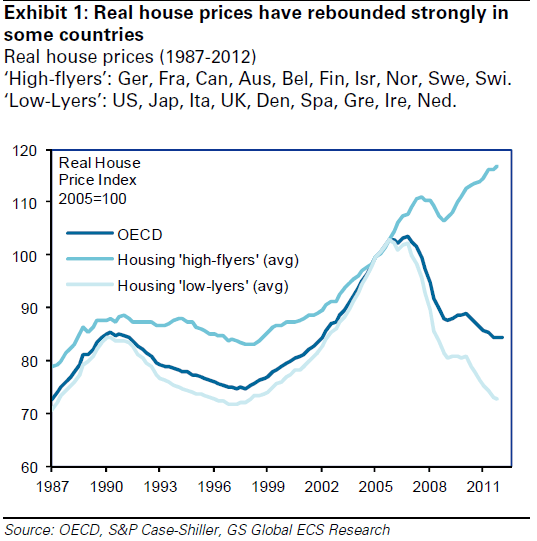
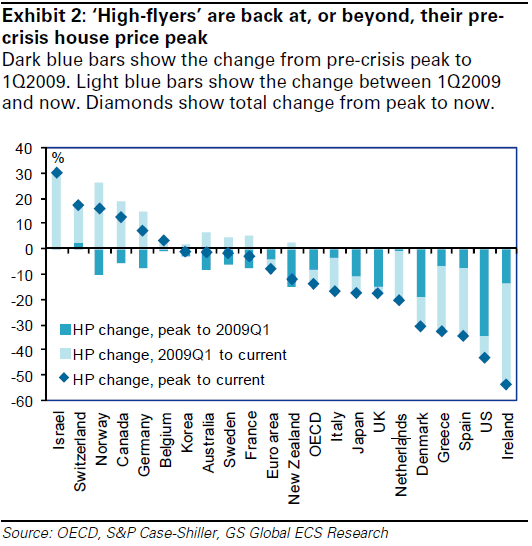
Goldmans also attempt to identify the degree to which the surge in home values in the ‘high-flying’ countries presents risks to respective economies by assessing the change in real (inflation-adjusted values) over a 15-year time period, the divergence between house prices and rents, as well as the overall level of construction.
On the first point – the degree to which home prices have risen – Australia ranks fairly poorly, with Australia experiencing the equal third biggest price appreciation since 1997 (see below chart).
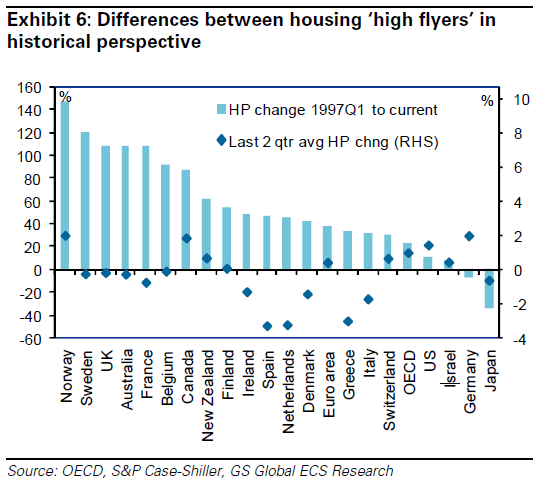
Australia also ranks fairly poorly when home prices are compared against rents, although the situation is improving owing to recent house price weakness and rising rents (see below chart).
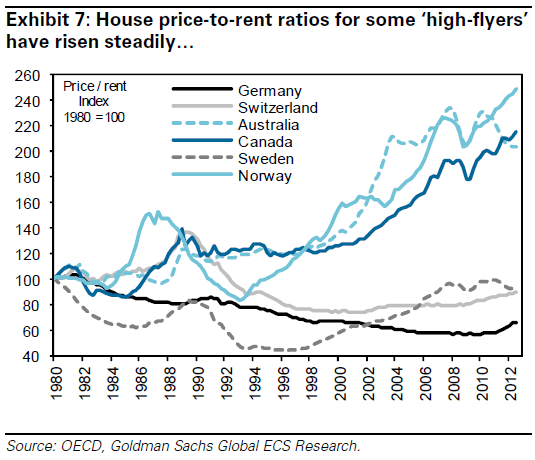
However, Australia’s amemic rate of new home construction is a plus, according to Goldmans, with permit levels running below long-term averages (see below chart).
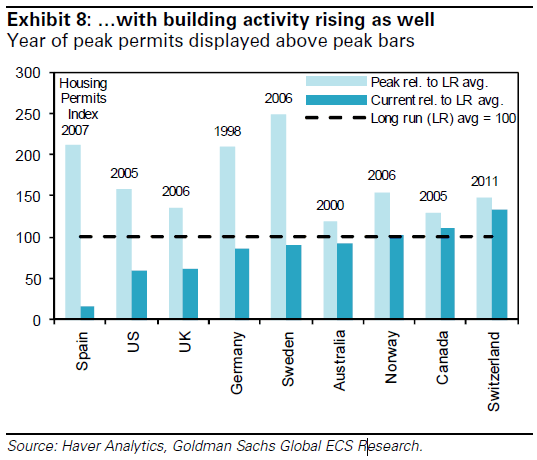
Goldmans notes that policy makers in the high-flying countries are in bind, with the desire to ease monetary policy in order to safeguard economic growth running the risk of fuelling further housing bubbles. Accordingly, more authorities are looking at macroprudential tools, such as loan-to-value (LTV) ratio limits, in order to temper housing-related excesses. Examples of programs being implemented in high-flyer countries include:
In Norway, the Financial Supervisory Authority (FSA) recommended a maximum prudential loan-to-value (LTV) ratio of 85% in December 2011, down from a 90% maximum (which was instituted in 2010), with a risk of higher capital charges for banks not meeting these guidelines.
In Sweden too, a maximum LTV of 85% was introduced in December 2010, and there is ongoing discussion about additional macroprudential regulation to be enshrined in legislation.
In Israel, only last week the MPC cut rates even as the Supervisor of Banks moved to tighten mortgage lending conditions by limiting the LTV ratio for housing loans to 70% from November onwards. This is a continuation of previous macroprudential measures by the Banking Supervision Department of the Bank of Israel (which included limiting the maximum floating rate component of housing loans to 33.3% in 2Q2011).
In Canada, regulators have followed primarily two approaches: ‘jawboning’ by the Bank of Canada (including the recent modest strengthening of the tightening bias in its October policy statement), and tightening the requirements for government mortgage insurance in at least three separate steps since 2010, most recently in summer this year. From July 2012, the CMHC (Canadian Mortgage and Housing Corporation), which insures about three-quarters of Canadian mortgages, has lowered the maximum LTV ratio to 80% for mortgage refinancing (from 85% in 2011), reduced the maximum amortisation period to 25 years from 30 years, and fixed maximum levels of debt-service ratios.
Even in the ‘housing high-flyers’ such as Germany, where valuation concerns appear less pressing as of now, plans are afoot to establish the framework for undertaking macroprudential policy in the future.
Australia’s reluctance to examine these types of measures casts serious doubts about claims that our financial sector regulation is world-beating. Given the over-valued currency is hitting the entire tradeable sector is also in part the result of high interest rates, examining macroprudential rules is fast becoming a question of national interest.
Twitter: Leith van Onselen. Leith is the Chief Economist of Macro Investor, Australia’s independent investment newsletter covering trades, stocks, property and yield. Click for a free 21 day trial.

